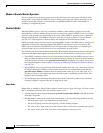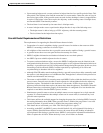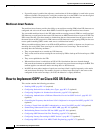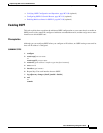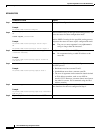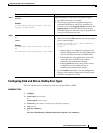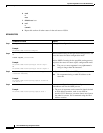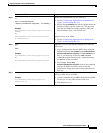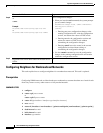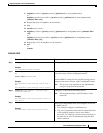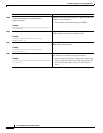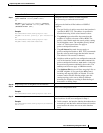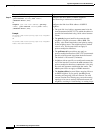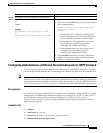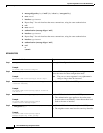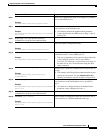
Implementing OSPF on Cisco IOS XR Software
How to Implement OSPF on Cisco IOS XR Software
RC-150
Cisco IOS XR Routing Configuration Guide
Configuring Neighbors for Nonbroadcast Networks
This task explains how to configure neighbors for a nonbroadcast network. This task is optional.
Prerequisites
Configuring NBMA networks as either broadcast or nonbroadcast assumes that there are virtual circuits
from every router to every other router or a fully meshed network.
SUMMARY STEPS
1. configure
2. router ospf process-name
or
router ospfv3 process-name
3. router-id {ipv4-address | interface-type interface-instance}
4. area area-id
5. network {broadcast | non-broadcast | {point-to-multipoint [non-broadcast] | point-to-point}}
6. dead-interval seconds
7. hello-interval seconds
8. interface type number
Step 8
end
or
commit
Example:
RP/0/RP0/CPU0:router(config-ospf-ar)# end
or
RP/0/RP0/CPU0:router(config-ospf-ar)# commit
Saves configuration changes.
• When you issue the end command, the system prompts
you to commit changes:
Uncommitted changes found, commit them before
exiting(yes/no/cancel)?
[cancel]:
–
Entering yes saves configuration changes to the
running configuration file, exits the configuration
session, and returns the router to EXEC mode.
–
Entering no exits the configuration session and
returns the router to EXEC mode without
committing the configuration changes.
–
Entering cancel leaves the router in the current
configuration session without exiting or
committing the configuration changes.
• Use the commit command to save the configuration
changes to the running configuration file and remain
within the configuration session.
Step 9
Repeat this task on all other routers in the stub area or
NSSA.
—
Command or Action Purpose



